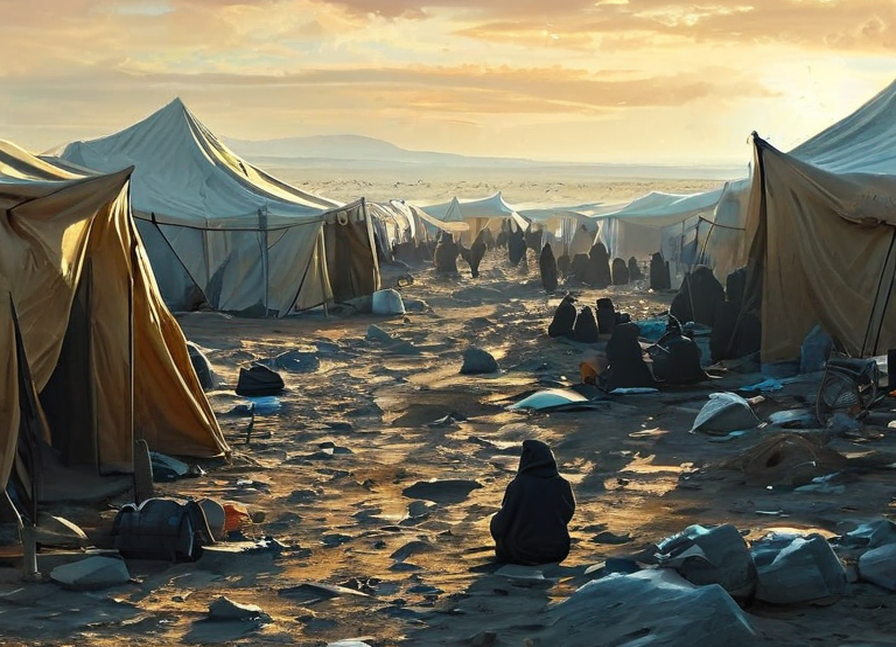Introduction
The Israeli-Palestinian conflict is a complex issue with deep historical roots. It involves humanitarian and political perspectives shaping the region’s dynamics. This analysis aims to shed light on the current state in 2024.

Humanitarian Perspective of Israeli-Palestinian conflict
Current Humanitarian Crisis
The humanitarian situation in the occupied Palestinian territories, particularly Gaza, has deteriorated recently. Following years of blockade, periodic escalations of violence, and ongoing military operations, the region faces significant challenges:
- Displacement and Refugees: Increased military activity has led to further displacement. Hundreds of thousands of Palestinians are now living in precarious conditions, lacking access to basic services such as healthcare, sanitation, and adequate shelter.
- Healthcare Access: The healthcare system is overwhelmed. Hospitals are operating beyond capacity, fighting with shortages of medical supplies, and faced with the inability to provide necessary care due to constant threats of violence.
- Food Security: The blockade and agricultural restrictions have resulted in severe food insecurity. A significant percentage of the population relies on humanitarian aid, which is often insufficient to meet basic nutritional needs.
International Response to Israeli-Palestinian conflict
Humanitarian organizations continue to advocate for increased aid and support. While some nations recognize the urgent need to ease the suffering, the political complexities often hinder effective action. Collaboration between NGOs and local entities is crucial in providing immediate relief and long-term solutions, yet persistent obstacles impede progress.

Political Perspective
Stalemate in Peace Negotiations
Efforts toward a two-state solution have faced stagnation, with little progress in negotiations since the collapse of talks in previous years. Factors contributing to this stalemate include:

- Settlement Expansion: Israeli settlements in the West Bank have expanded, complicating territorial claims and undermining prospects for a viable Palestinian state. The international community is divided on the legality and implications of these settlements.
- Political Fragmentation: Palestinian political factions, primarily Fatah and Hamas, remain deeply divided, weakening their negotiating position and complicating unity efforts. The lack of a cohesive Palestinian leadership has been detrimental to advancing peace initiatives.
- Geopolitical Dynamics: Regional powers and global actors play significant roles in shaping the conflict. Relationships between Israel and various Arab states are evolving, and the influence of external actors can either facilitate or hinder progress toward resolution.
Future Outlook
In 2024, the political landscape is increasingly characterized by unrest and dissatisfaction among both Israeli and Palestinian communities. Growing frustration may lead to increased militancy from non-state actors and further destabilization in the region. Policymakers must consider these dynamics while evaluating potential pathways to peace.

Conclusion
The Israeli-Palestinian conflict in 2024 exemplifies a complex interplay of humanitarian crises and political stagnation. For policymakers, humanitarian groups, and the general public, understanding the nuances of both perspectives is essential for fostering informed dialogue and facilitating meaningful interventions.

Addressing urgent humanitarian needs and navigating complex political landscapes is a tough but crucial task for long-term stability and peace in the region.

